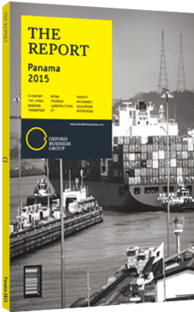Melitón Arrocha, Minister of Commerce and Industry: Interview

Interview: Melitón Arrocha
What are the strategic sectors for development?
MELITON ARROCHA: The government has identified the logistics, agriculture, livestock, mining, tourism, energy, construction, services, technology and communications sectors as the pillars of economic development. With these pillars in mind, the government is working to adapt the administrative structure of the state in order to strengthen economic development. We elevated the former National Environment Authority to ministerial status in order to safeguard the country’s interests regarding the environment. The ministry is in charge of coordinating and directing actions in order to execute the country’s commercial policies. Its role is to act as socially responsible enablers of economic development. This is done to promote and enhance exports, trade and industry by applying a framework that involves innovation, the development of environmentally friendly technologies, knowledge transfer and cooperative work between the public and the private sectors.
How is the government working to boost exports?
ARROCHA: The Panamanian government is focused on strengthening the primary sector, for which it has started a process of research and consultation with agriculture, livestock and agro-industry producers. The aim is to align existing policies with what the country’s industries require, always taking into account each sector’s strengths and weaknesses.
In order to boost exports, the ministry is placing special emphasis on a programme of attending international fairs. In this regard, Panama will be present in 14 international trade fairs in areas such as craftsmanship, sea products, logistics, food, speciality coffee and agro-industries, among other sectors in key markets around the world. Furthermore, a technical training programme for exporting or potentially exporting sectors is being rolled out across the country.
It is also important to take into account that Panama currently has eight trade agreements, and 12 free trade agreements. These are legal instruments that magnify competitive advantages based on tariffs, in order to promote exports from Panama to markets such as the US, Canada, the greater Central American region, Mexico, Colombia, Chile, members of the European Free Trade Association, other EU members and Singapore. The goal is to increase the country’s exportable products by utilising and leveraging these trade agreements and treaties.
What is Panama doing to encourage investment?
ARROCHA: One must first point out that foreign direct investment (FDI) to Panama in 2014 reached $4.7bn, which represents a 1.4% increase on the previous year. Furthermore, the Economic Commission for Latin America and the Caribbean pointed out that Panama will lead regional expansion with at least 6% GDP growth. The government is investing almost $6.4bn in public works which includes lines two and three of the metro, the renovation of the city of Colón and basic health care.
Moreover, the expected finalisation of the expansion of the canal in 2016 opens the door to private sector investment in infrastructure for ports and related services. As an example, the Port of Singapore Authority is planning to invest $400m in the Rodman container terminal in order to increase its capacity by 2m twenty-foot equivalent units and to be able to service ships with up to 24 rows of containers.
Furthermore, the ministry administrates three laws that incentivise FDI: the Investment Legal Stability Law, the Law of Headquarters of Multinational Companies and the Free Zone Law. These laws offer fiscal, labour, migration and tariff incentives for investors, and are promoted through Proinvex, the country’s trade and investment agency. This entity executes the country’s promotion policies regarding trade. Lastly, it is important to point out Panama’s geographical advantages, which have expanding air, maritime and land connectivity. All of these factors are supported by a sophisticated telecoms network, a solid banking sector and laws that incentivise investment across a variety of sectors.
You have reached the limit of premium articles you can view for free.
Choose from the options below to purchase print or digital editions of our Reports. You can also purchase a website subscription giving you unlimited access to all of our Reports online for 12 months.
If you have already purchased this Report or have a website subscription, please login to continue.

